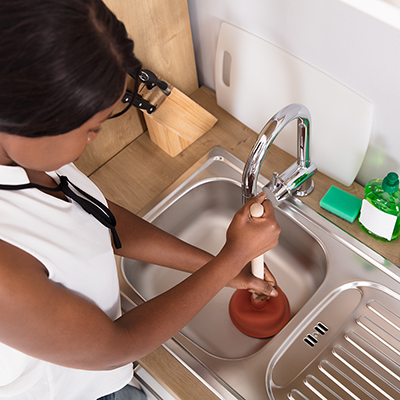Best Toilet Plungers and Sink Plungers

Last updated September 7, 2023
An essential tool to have in any home, plungers help unclog toilets, bathroom and kitchen sinks, tubs and showers. Keeping different types of plungers on hand can save you from having to wait for a plumber and pay for a service call. Before you buy a plunger, consider the features of each kind and how they work.
Use this guide to find the best toilet plunger and the best sink plunger for your needs.
Table of Contents
Types of Plungers
Flange Plungers
Beehive Plungers
Cup Plungers
Tiered Plungers
How to Clean a Plunger
Types of Plungers
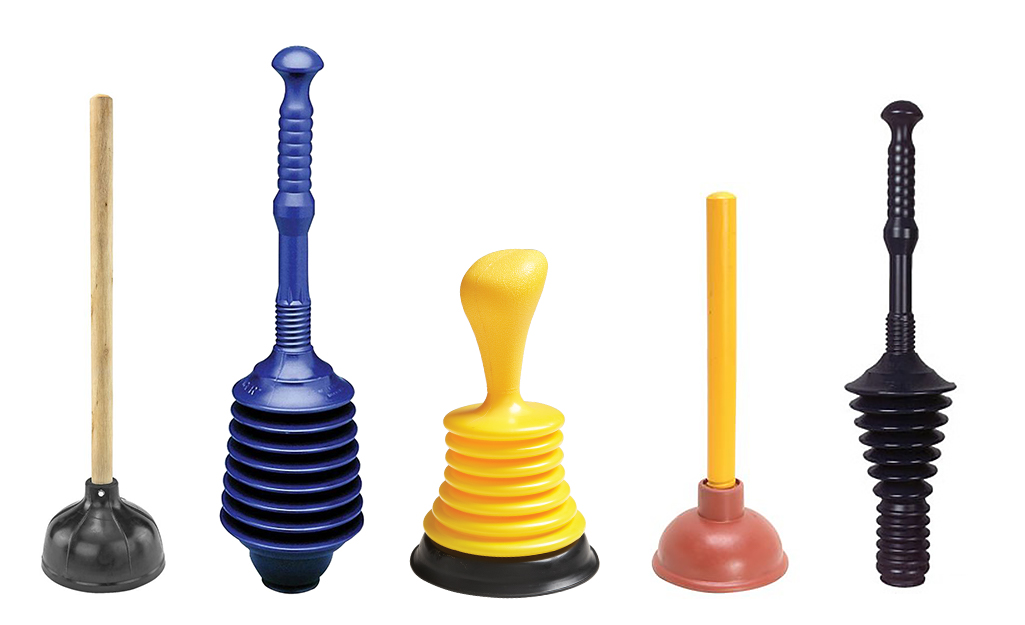
Plungers are non-mechanical devices that have a handle with a rubber cup on the end. The flexible, rubber cup lets you make a tight seal around a drain so you can force water up and down until the pressure clears a blockage.
Various types of plungers are useful for clearing shallow clogs in sinks, toilets, bathtubs and shower drains. Plungers come with three basic kinds of cups: flanged, beehive or tiered, and each one works a little differently.
Plungers also have metal, wooden or plastic handles. Long handles are useful for loosening blockages in toilets, while short handled-plungers that fit under faucets are typically used for clearing clogs in kitchen sinks, bathroom sinks and other waist-high sinks. Some handles are ergonomically designed to give you a better grip, and “T”-shaped handles let you use both hands to plunge more effectively. No matter what kind of handle you choose, be sure it is durable and sturdy.
Flange Plungers
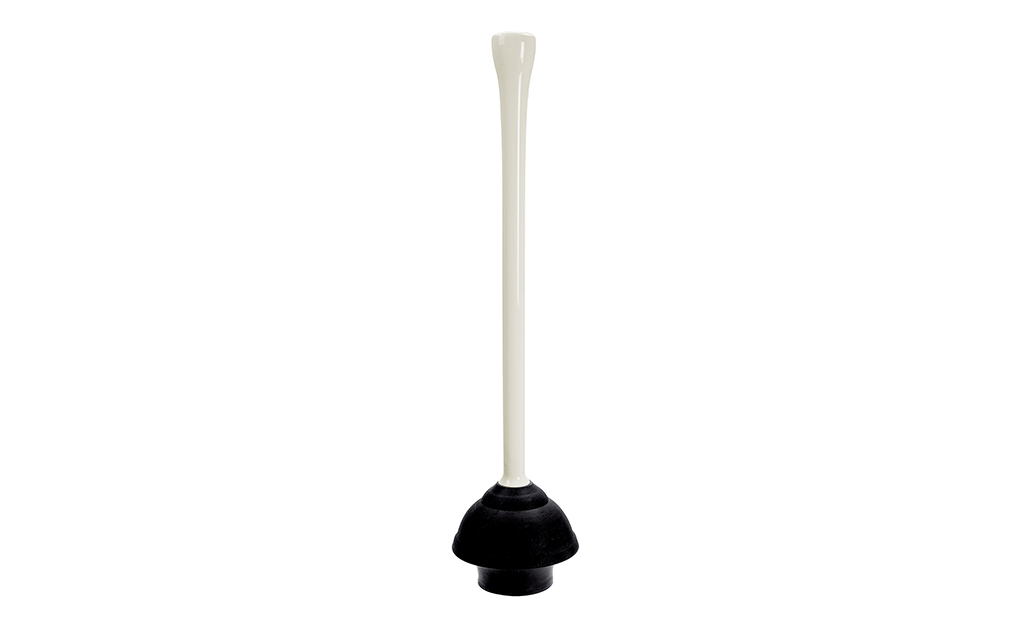
Flange plungers are used to clear toilet clogs. These plungers have a rubber cup with a sleeve-like extension, which is the flange. To use the plunger, put the flange into the toilet bowl and get as much water as possible into the flange and the cup. Then press the cup down over the hole in the toilet bowl and make a tight seal.
If you think you'll have trouble getting a good seal, apply petroleum jelly to the rim of the cup.
Make the first up-and-down plunge slow and easy. If you plunge too fast, any air trapped inside the plunger will be forced out around the seal, shooting dirty water from the toilet bowl around the bathroom.
Thrust the handle up and down rapidly five or six times, being careful not to break the seal. Then take the cup off the hole to see if the clog has loosened. Ideally, you've created enough suction in the drain to clear the clog.
If it's still there, repeat the steps above until the toilet empties by itself. If the blockage still won't budge, try clearing it with a toilet auger, also called a plumbing snake or drain snake, or call a plumber.
Flange plungers are often the best toilet plungers for standard toilets.
Beehive Plungers
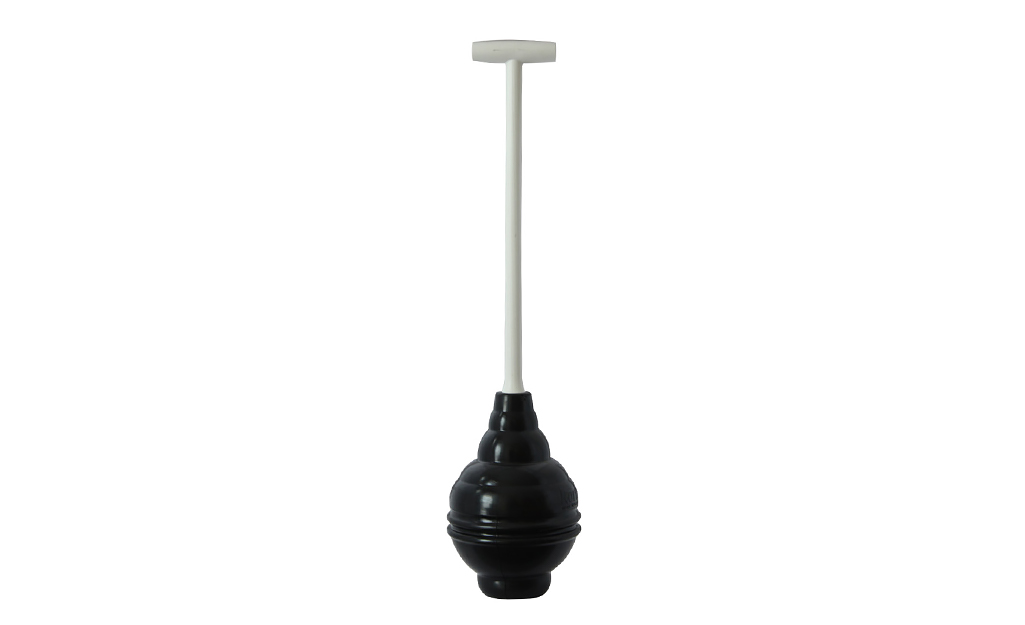
Beehive plungers look like rounded cylinders with wide middles, and their rubber cups also have a flange. In general, these plungers are used to clear toilet clogs and will fit bowls of almost any shape and size. They're often the best toilet plungers for elongated toilet bowls. They're also excellent low flow toilet plungers.
To use a beehive plunger, follow the steps for a flange plunger.
Cup Plungers
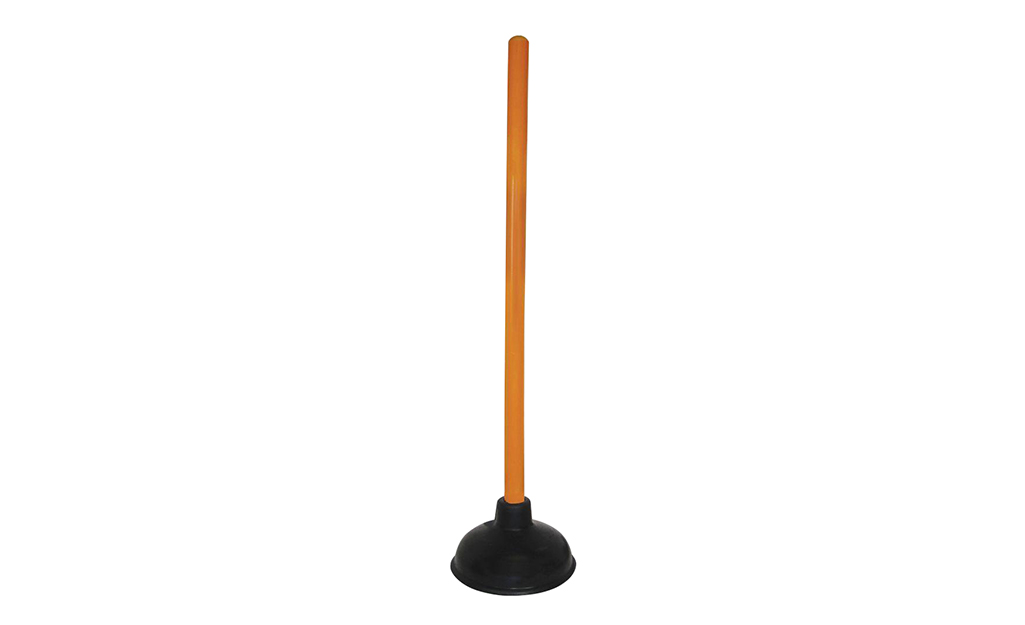
Cup plungers are the best plungers for sinks. These plungers have flexible rubber cups with flat bottoms. The flat cup is used to create a seal over a drain on a flat surface, such as on a shower floor or in the bottom of a tub or sink.
A flange plunger can also be used to clear clogs in showers, tubs and sinks, if you fold the flange into the cup to make the bottom flat. However, most people prefer to use a different plunger for their showers, tubs and sinks for sanitary reasons.
Cup plungers can also be used in toilets, but they aren't usually as effective because they can’t form tight seals in toilets with curved bowls.
The steps for using a cup plunger are the same as for using a flange plunger. Again, if you have a lot of standing water in a clogged tub, sink or shower, remove some of it with a bucket to avoid splashes. If there’s very little water, add a few inches so the cup plunger can form a good seal over the drain.
Also, be sure to cover any sink or tub overflow outlet with duct tape, or plug the outlet with a damp rag, before you start plunging. This helps pressure build up to dislodge the blockage. If you have a double sink, cover any openings on the other side, too.
When the clog clears, run the water for a couple of minutes. Then remove the tape or rag from the overflow outlet.
Tiered Plungers
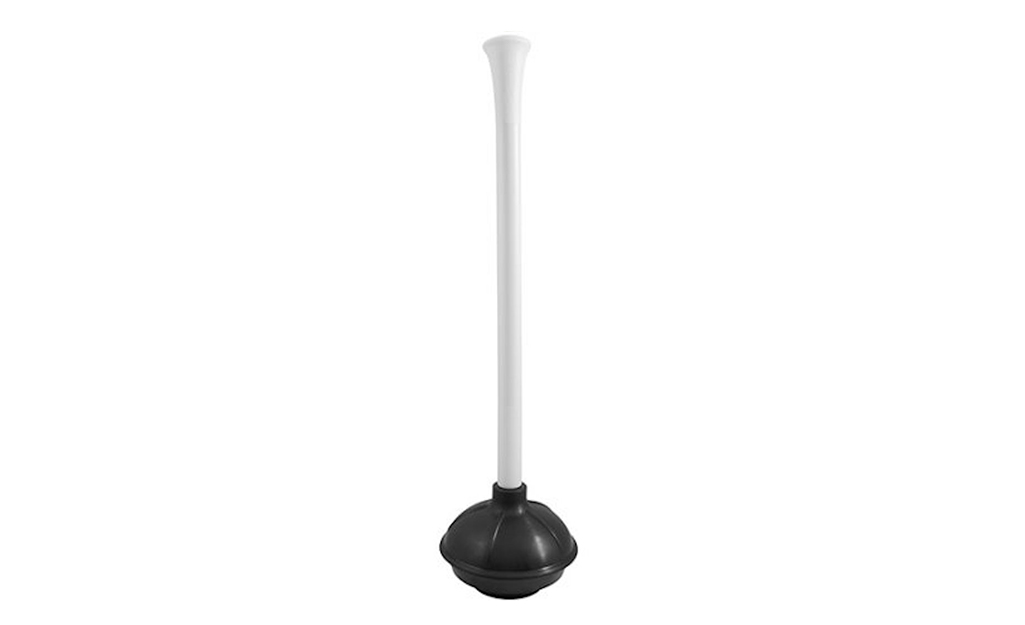
A plunger with a tiered design produces strong suction to dislodge clogs. In general, the tiers will fit in almost any size toilet bowl, kitchen sink or bathroom sink. Tiered plungers can be harder to clean than other types of plungers, however, since toilet paper tends to stick to them.
How to Clean a Plunger
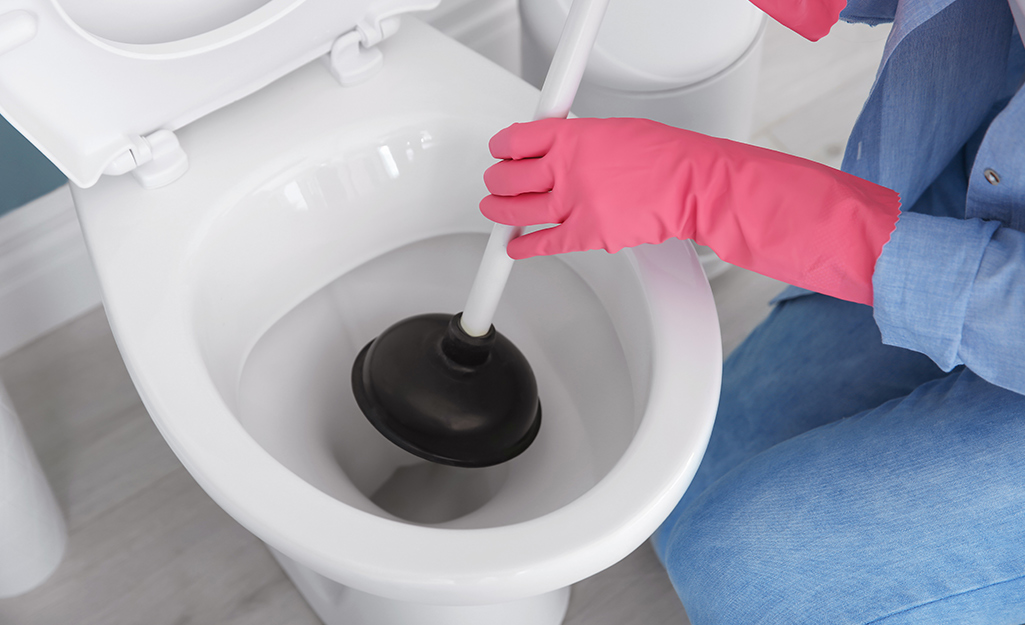
To clean a plunger, flush the toilet after the clog is gone and let the incoming fresh water rinse the plunger. Then put three capfuls of liquid chlorine bleach into the toilet bowl. Swirl the plunger in the bowl for a few minutes. Then flush the toilet again and let the water coming into the bowl give the plunger a final rinse. Substitute a toilet bowl cleaner for the bleach, if desired, and use the amount indicated on the product label.
To clean a sink, shower or tub plunger, rinse the plunger after the blockage is gone and then swirl it around in a mixture of water and chlorine bleach or in a cleaner/disinfectant. Rinse the plunger again with fresh water.
Put the clean plunger in a tub or shower to dry. Clean and disinfect it again every time you use it.
Look for a caddy set, or a plunger with a matching holder, to store the plunger if you plan to keep it where it's visible. Some plungers come with drip trays or canisters for storage. Plungers with holes in the handles can be hung behind a bathroom door.
Sink Plungers vs. Toilet Plungers
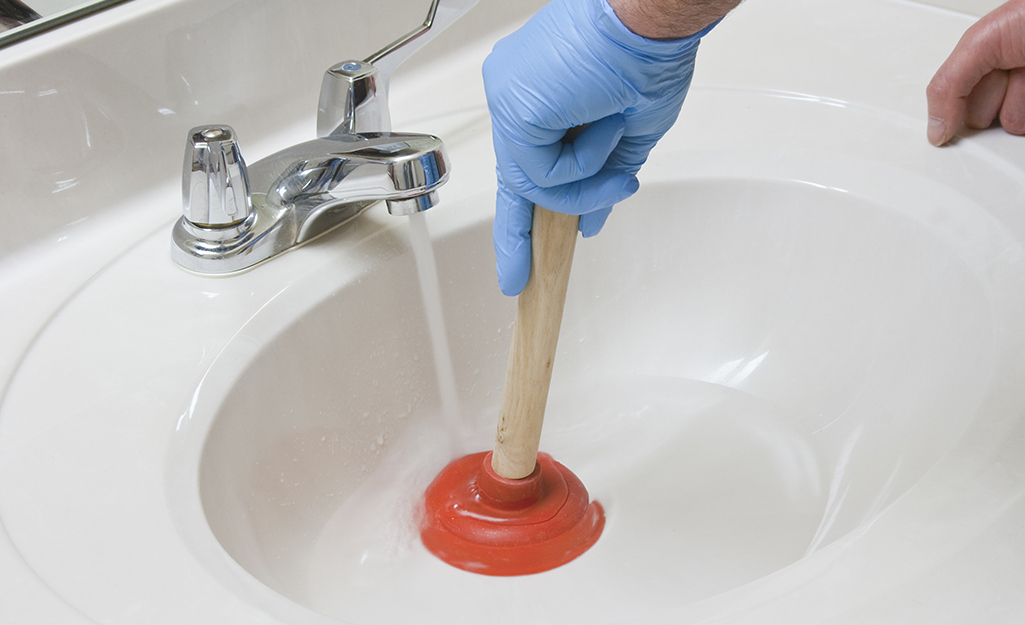
If you're shopping for a sink plunger vs. a toilet plunger, you may want a sink plunger. Its flat-bottomed rubber cup can be used for sink, shower, tub and toilet drains. However, it's harder to form a good seal in a curved toilet bowl with a flat-bottomed sink plunger.
In general, the best plunger for a sink will have a flat-bottomed rubber cup and a short handle, but your needs may vary. If possible, keep different types of plungers on hand for different uses.
In addition to finding the best toilet plungers and sink plungers, it may be a good idea to familarize yourself with using one to unclog a toilet or drain. Ready to buy your new plunger? Use The Home Depot Mobile App to find what you need. The Home Depot delivers, just say when, where and how.







